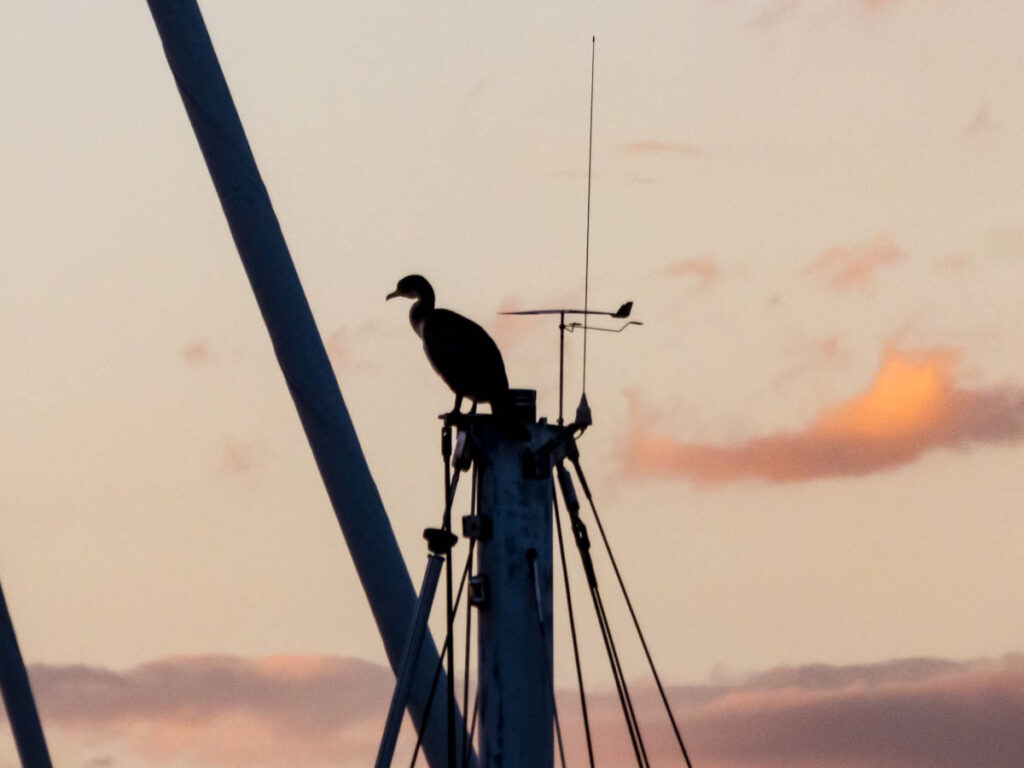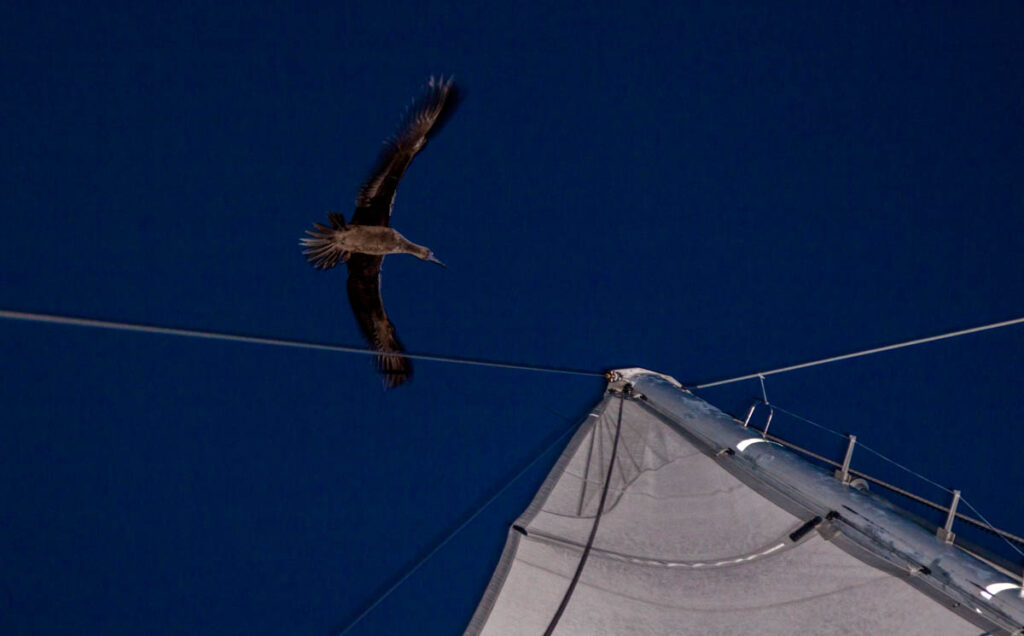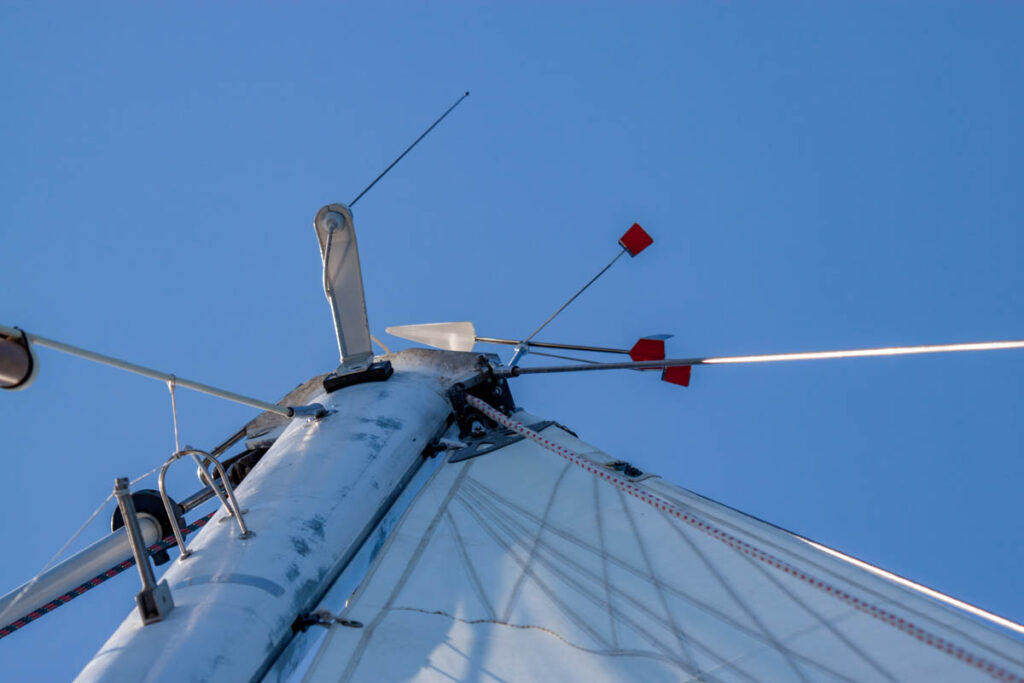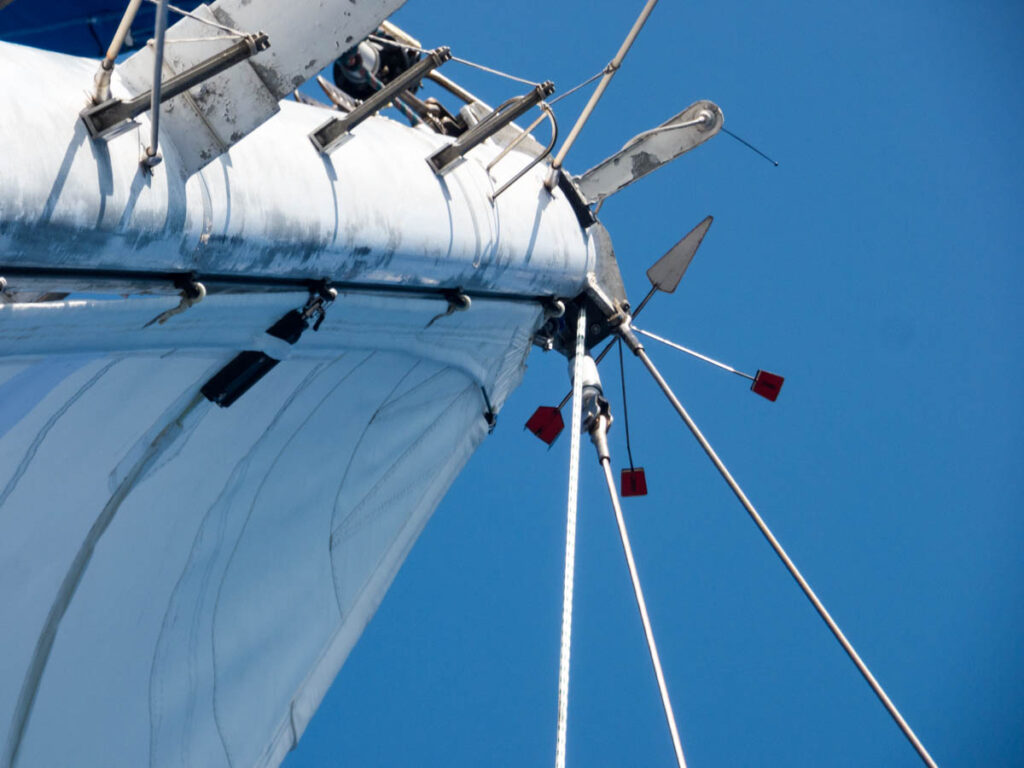An unbreakable, durable stainless steel wind indicator
Broken or blown-off wind indicators are a recurring problem for many yachtsmen. And it can be all too common. This first Product Test will focus on the WindPe stainless steel wind indicator from Niro-Petersen. We will be sharing our experience as it is. We will look at the alternatives, the features and the installation.

Your sailboat is well prepared, ready for racing or cruising. You’re already looking forward to taking the helm, sails well trimmed, in a medium wind. Once you’ve weighed anchor or left the dock, when it’s time to hoist the sails, you look up at the masthead to come into the wind. Then, kaboom! The feeling immediately sinks in: your trip is going to be more complicated and less fun…
The wind indicator is gone, or bent: yet again, those pesky birds have played a nasty trick on you! How can you avoid this problem in the future? We may have a solution for your boat.
Why a traditional wind indicator?
It’s true that many cruisers and racing yachts are now equipped with electronic wind sensors. These are very practical tools, especially on catamarans, where you need to know the actual wind strength. However, many sailors still believe that there’s nothing better than a visual indicator. Directly visible at the masthead, a small windvane reacts more accurately to gusts or direction changes.
Yet, having to sail without a wind indicator is not only unpleasant, it could become dangerous. When running downwind, in particular, there’s the risk of an uncontrolled gybe. So, as a last resort, you could jury-riginto the shrouds a few spare tell-tales (or dogvanes). But this is far from precise, especially as the sails interfere with the airflow at this height.
The issue, though, is that the optimal mounting for the indicator (atop the mast) is also the perfect spot for birds, whether marine or terrestrial. This applies to both traditional and electronic weathervanes. Ours attracted seagulls, gulls and cormorants, of course. But it also seemed to appeal to gannets (those tropical cousins of gannets), and even Australian ospreys. And the proximity of a VHF(Very High Frequency) Radio wave frequency band, between 30 and 300 MHz. By extension, the most widespread marine radio sets, operating on a series of predetermined channels between 156 and 174 MHz, with a range of a few miles to a few dozens of miles. More antenna isn’t always enough to dissuade them from attempting a landing. Sometimes, on the contrary, the hyponotising navigation lights will attract them at night.

A market dominated by a handful of brands
So we need a good, sturdy wind indicator. We have little to say about the windvane qualities of the models generally stocked by the regular chandlers. However, it should be said that the selection on offer is generally limited, with two or three brands sharing the market. At the risk of being a little simplistic, the only criterion for choice is generally the size of the indicator to match the size of the boat, since the larger the mast, the smaller it will logically appear from the cockpit.
When the indicator breaks, it’s usually replaced by an identical model. If only to ensure that a different mounting is not required at the masthead, a place where any DIY quickly becomes complicated. And yet, isn’t there an alternative?
We’ve had to deal with this problem on several occasions. And twice we made the mistake of replacing the broken indicator with an identical one. When, for the third time in two years, seabirds got the better of our plastic model, it was time to find a more durable solution for our sailboat.
Putting an end to the problem of broken wind indicators

Alongside the market leaders, you may be surprised to learn that there are other manufacturers. You may have heard little or nothing about them because they are not widely distributed brands. On closer inspection, we came across a promising model from Niro-Petersen: the WindPe.
It is advertised on the manufacturer’s website at around €85. However, it seems to be available for 5 to 10 euros less in the online stores of major German manufacturers. The extra cost compared with plastic models is therefore modest.
On the face of it, this model looks promising as a way of streamlining boat maintenance.
Have we finally found the unbreakable wind indicator? First, let’s take a look at its design and how to install it.
WindPe indicator features
Niro-Petersen is a German riggingAll the spars (masts, booms, yards), cables and ropes needed to hold and maneuver the sails. More manufacturer, based on the Baltic coast, just by the Danish border. Everything seems to be manufactured on site, in Europe. Their catalog includes over 1,200 references, mainly in stainless steel. The WindPe is no exception: it’s made entirely of A4 stainless steel, designed to withstand the marine environment. Don’t worry about putting a stainless steel weight on the masthead, it only weighs 160 g.
Like its plastic counterparts, it features upwind and downwind reference indicators, and reflectors on the underside for visibility from deck, even at night. Only the tail is a little different from the usual models, as it sports double fins. But this doesn’t detract from its functionality. On the contrary, it probably makes it even more stable and responsive, although we have no data to back up this obviously subjective impression.
Installing the WindPe indicator
Installation was straightforward. In fact, its support is terminated by a screw thread identical to that of the models to be replaced. There are no new holes to drill, which is preferable because drilling a hole suspended from a halyard is never easy.
If you need to fix the halyard to a plate, the nut is included. And if the indicator is to be mounted in a threaded hole, just don’t use the nut. Finally, the indicator shaft is fitted with a flattened section, enabling the WindPe to be tightened in with a wrench if required. All in all, the work atop the mast was quick and painless.
Verdict about this unbreakable wind indicator

Our purchase dates back to 2012, and the model is still in the Niro-Petersen catalog. And as far as we’re concerned, it’s still going strong, ten years later! It even resisted the attacks of an Australian osprey, which required an intervention to unbend it. But once that was done, it was able to continue its career unhindered.
With the WindPe, we’ve finally stopped sending bits of plastic into the water, and at the same time we’ve stopped having to replace our wind indicators. For you, as for us, the WindPe could be the long-lasting wind indicator for your sailboat. That’s why we’re featuring it as a first entry into this series on our favorite tested and trusted equipment. See you soon for more Product Tests.
Note: we are in no way connected or affiliated with the Niro-Petersen company which manufactures the WindPe weathervane. This unsollicited product test reflects our own experience after purchasing and using this equipment on our boat.
Would you like to take better care of your boat and sail with greater peace of mind?
Test our mobile application, available on Google and Apple stores. You can track your boat’s maintenance free of charge and send us your feedback.
